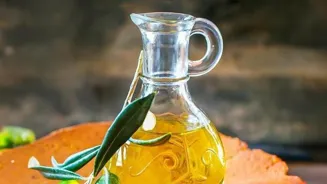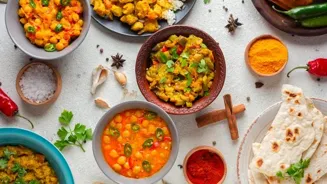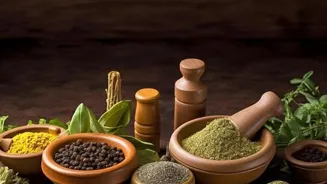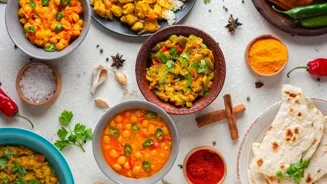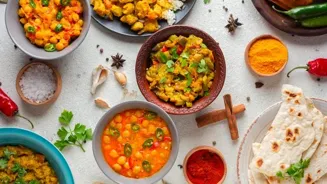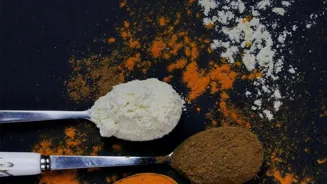Explore the world of Indian cooking oils! Learn about 10 essential oils & how they enhance your dishes
India, a land of vibrant cultures and diverse culinary traditions, boasts a rich tapestry of flavors.
At the heart of Indian cooking lies the humble cooking oil, a key ingredient that not only imparts flavor but also contributes to the overall health and well-being.
Selecting the right cooking oil can elevate your dishes from ordinary to extraordinary. Here, we explore 10 essential cooking oils commonly used in Indian recipes, highlighting their unique properties and optimal uses for vegetarian food.
Mustard Oil (Sarson ka Tel): The Pungent Powerhouse
Mustard oil, with its distinctive pungent aroma and flavor, holds a special place in Indian cuisine, particularly in North and East India. Extracted from mustard seeds, this oil is rich in monounsaturated fatty acids (MUFA) and polyunsaturated fatty acids (PUFA), making it a heart-healthy choice.
Its sharp, slightly bitter taste adds depth to pickles, vegetable dishes, and stir-fries. When using mustard oil, it's important to heat it until it reaches its smoking point to reduce its pungency and improve its flavor. It is favored for making pickled vegetables like mango, carrot and lemon.
Don't forget to temper it well before adding to the vegetables which gives the perfect flavor.
Groundnut Oil (Moongphali ka Tel): The Versatile All-Rounder
Groundnut oil, also known as peanut oil, is a versatile cooking oil with a mild, nutty flavor. Its high smoke point makes it suitable for deep-frying, stir-frying, and sautéing. It is widely used in South Indian cuisine for preparing dosas, vadas, and uttapams.
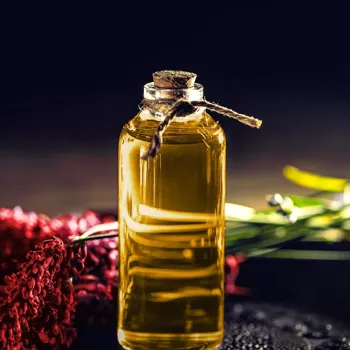
The oil's neutral taste allows the natural flavors of the ingredients to shine through. It can also be used for seasoning purpose. The light taste and aroma of this oil will give the South Indian food the authentic taste you crave.
Using it to temper is also favored, for it will give dishes a slightly nutty taste.
Coconut Oil (Nariyal ka Tel): The Tropical Delight
Coconut oil, extracted from the flesh of mature coconuts, is a staple in South Indian and coastal cuisines. It imparts a distinct tropical flavor and aroma to dishes. There are two main types of coconut oil: refined and unrefined.
Unrefined coconut oil, also known as virgin coconut oil, has a stronger coconut flavor and aroma and is considered healthier due to its higher antioxidant content. Coconut oil is commonly used in curries, vegetable dishes, and desserts.
Its high saturated fat content can be balanced by using it in moderation. The aroma and taste take any dish to another level.
Sunflower Oil (Surajmukhi ka Tel): The Light and Neutral Choice
Sunflower oil is a light and neutral-tasting oil extracted from sunflower seeds. It has a high smoke point, making it suitable for various cooking methods, including stir-frying, deep-frying, and baking. Sunflower oil is rich in vitamin E, an antioxidant that protects cells from damage.
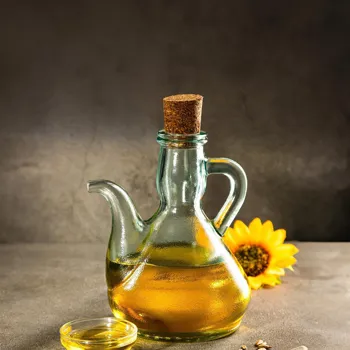
Its neutral flavor makes it a good choice for dishes where you want the flavors of the other ingredients to stand out. Also, it goes well even in baking like a cake or cookies, it is easy to mix with other ingredients. It is a healthy alternative that is low in fat and has zero cholesterol.
Rice Bran Oil (Chawal ki Bhusi ka Tel): The Healthy Heart Choice
Rice bran oil, extracted from the outer layer of rice grains, is gaining popularity due to its health benefits. It is rich in oryzanol, an antioxidant that may help lower cholesterol levels.
Rice bran oil has a high smoke point and a mild flavor, making it suitable for stir-frying, deep-frying, and sautéing. It is also a good source of vitamin E and other beneficial nutrients. It is regarded as one of the better options, and is easy to use.
It is also lightweight, meaning consuming food cooked from it will not lead to indigestion.
Ghee (Clarified Butter): The Aromatic Elixir
Ghee, or clarified butter, is a traditional Indian cooking fat made by simmering butter to remove water and milk solids. It has a rich, nutty flavor and a high smoke point, making it ideal for sautéing, deep-frying, and tempering spices.
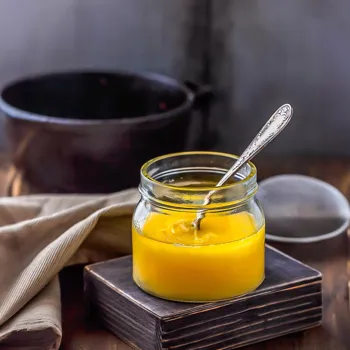
Ghee is also used in sweets and desserts, adding a distinct aroma and flavor. It is considered an auspicious ingredient in Indian cuisine and is often used in religious ceremonies. It is also rich with fat so control of quantity is a must while consuming.
Sesame Oil (Til ka Tel): The Nutty Goodness
Sesame oil, extracted from sesame seeds, has a distinctive nutty flavor and aroma. It is commonly used in Asian cuisines and is also gaining popularity in Indian cooking. There are two main types of sesame oil: light sesame oil and dark sesame oil.
Light sesame oil has a mild flavor and is suitable for general cooking, while dark sesame oil has a stronger flavor and is typically used for flavoring and finishing dishes. Sesame oil is rich in antioxidants and essential fatty acids.
Best for mixing into any dry vegetarian dishes, sprinkling around and on top of meals.
Olive Oil: The Mediterranean Influence
While not traditionally used in Indian cuisine, olive oil is gaining popularity among health-conscious cooks. Extra virgin olive oil, the highest quality of olive oil, has a distinct flavor and aroma and is best used for drizzling over salads, vegetables, and cooked dishes.
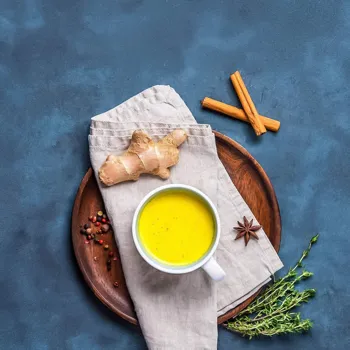
Light olive oil has a milder flavor and a higher smoke point, making it suitable for sautéing and baking. Olive oil is rich in monounsaturated fatty acids and antioxidants. Many Indian Chefs are now suggesting the use of olive oil.
Canola Oil: The Budget-Friendly Option
Canola oil, extracted from rapeseed, is a budget-friendly cooking oil with a neutral flavor. It has a high smoke point and is suitable for various cooking methods, including stir-frying, deep-frying, and baking. Canola oil is low in saturated fat and rich in monounsaturated fatty acids.
This should be kept at room temperature rather than in a dry environment.
Blended Oils: The Balanced Approach
Blended oils, which are a combination of two or more different oils, are becoming increasingly popular. These oils offer a balance of flavors, health benefits, and cooking properties.
For example, a blend of rice bran oil and sunflower oil can provide a high smoke point, a mild flavor, and a good balance of monounsaturated and polyunsaturated fatty acids. Using it will be a wiser choice.
Choosing the right cooking oil depends on your personal preferences, dietary needs, and the specific requirements of the dish you are preparing.
By understanding the unique properties of each oil, you can elevate your Indian cooking to new heights, creating delicious and healthy meals for yourself and your loved ones. Experiment with different oils to discover your favorites and unlock the full potential of Indian cuisine.
AI Generated Content. Glance/InMobi shall have no liability for the content